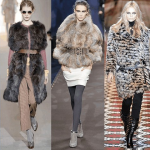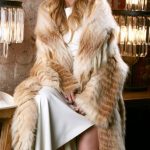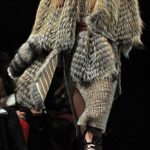Fur fashion has a long and storied history, with its origins dating back thousands of years to when early humans used animal hides as protection against the elements. Over the centuries, fur has remained a symbol of luxury and status, evolving from traditional garments worn for practical purposes to trendsetting pieces that grace the runways of high-end fashion shows.
In ancient civilizations such as Egypt, Greece, and Rome, fur was used to create garments that provided warmth and protection, particularly in colder climates. It was also a status symbol, with the wealthiest members of society adorning themselves in luxurious furs to showcase their wealth and power. Fur was often reserved for royalty, nobility, and religious figures, further adding to its prestigious reputation.
The popularity of fur continued to grow throughout the Middle Ages and Renaissance periods, with fur-trimmed garments becoming fashionable among the upper classes. Fur was commonly used in coats, cloaks, and hats, adding a touch of opulence to everyday attire. During this time, fur was also used for practical purposes, such as lining the interiors of garments to provide additional warmth.
By the 19th and 20th centuries, fur had become synonymous with high fashion, with designers incorporating fur into their collections to create statement pieces that exuded luxury and sophistication. Iconic fashion houses such as Christian Dior, Chanel, and Fendi began using fur in their designs, further cementing its status as a symbol of elegance and glamour.
In recent years, fur fashion has undergone a significant evolution, with a growing emphasis on sustainability and ethical sourcing. Many designers and fashion brands have made a conscious effort to use faux fur or recycled fur in their collections, in an effort to minimize the impact of fur production on animal populations and the environment. This shift towards ethical fur alternatives has been met with praise from consumers and activists alike, signaling a change in the way fur is perceived in the fashion industry.
Today, fur fashion continues to be a trendsetting force in the world of luxury fashion, with designers pushing the boundaries of creativity and innovation. From bold, colorful fur coats to sleek, modern accessories, fur continues to be a versatile and timeless material that adds a touch of luxury to any ensemble.
The evolution of fur fashion from traditional to trendsetting is a testament to its enduring appeal and versatility. As the industry continues to embrace ethical practices and sustainable alternatives, fur fashion will undoubtedly continue to evolve and captivate audiences around the world. Whether it’s a classic fur coat or a modern fur accessory, one thing is certain – fur will always be a symbol of luxury and style.
 thefashiontamer.com Fashion Inspirations
thefashiontamer.com Fashion Inspirations














